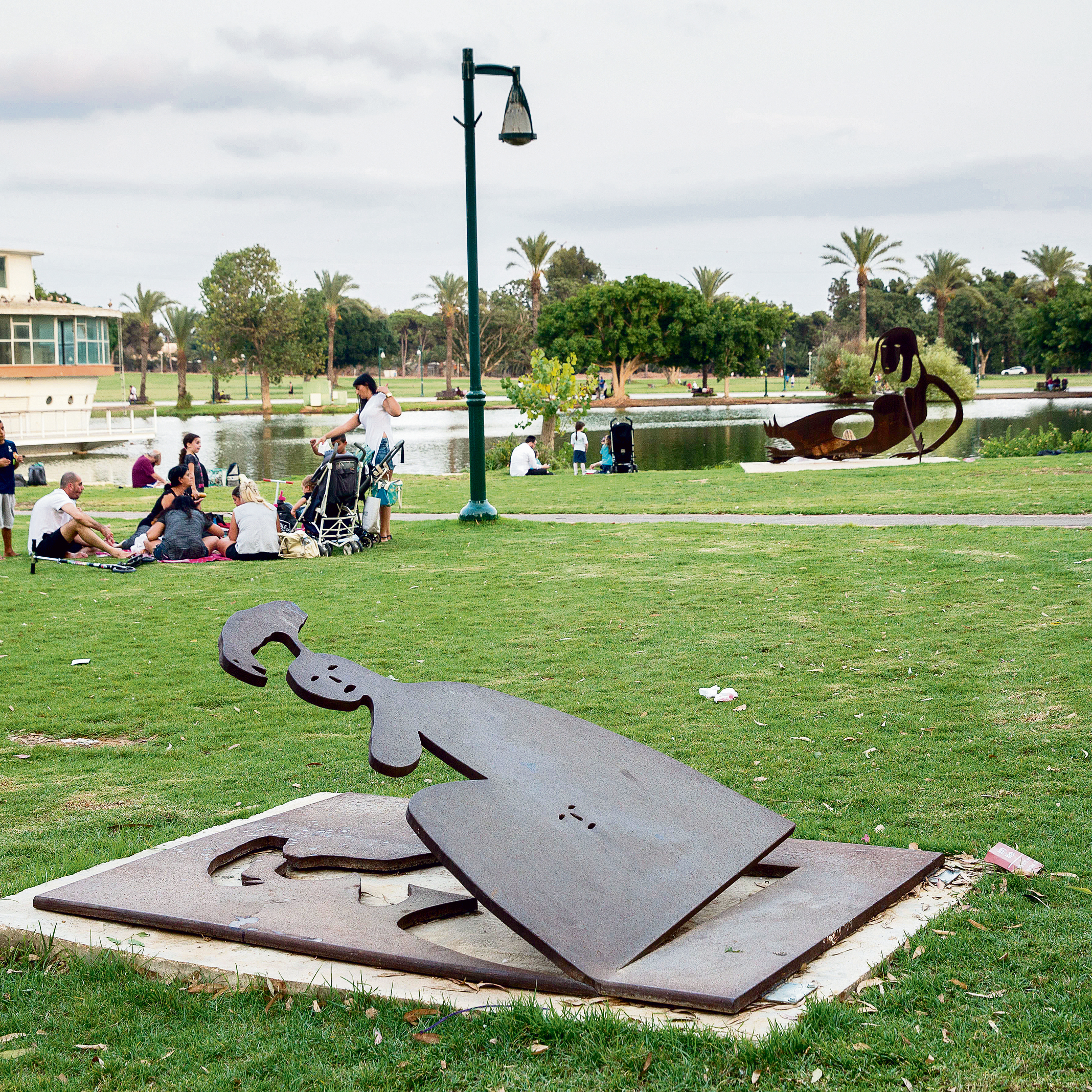Featured Post
Free The Hostages! Bring Them Home!
(this is a featured post and will stay at the top for the foreseeable future.. scroll down for new posts) -------------------------------...
Sep 25, 2016
having an affair with a statue
How do these things start?
JTA and Yediot are reporting about a statue, a piece of art, located, on loan, in Ramat Gan that has become a focal point of women looking for divine assistance in conceiving a child and giving birth.
 The piece of art in question is a piece entitled "Birth" and is a statue in the shape of a woman laying down with a smiley face on her tummy. The artist, Menashe Kadishman, died last year at the age of 83.
The piece of art in question is a piece entitled "Birth" and is a statue in the shape of a woman laying down with a smiley face on her tummy. The artist, Menashe Kadishman, died last year at the age of 83.
The report says that women gather around the statue and take turns laying down on the statue and reciting chapters of tehillim and other things.
How do these things begin? How did women think, and how did word spread, that this statue has mystical powers and the ability to somehow help them conceive?
When a rabbi is involved in creating the story, like the story of the chair of Rav Kaduri in a shop in Ashdod, at least it is somewhat understandable why some people ascribe spiritual power to it. In this instance, nothing is mentioned as to why people believe this or how it began.
At what point does it become avoda zara, and at what point does it become cheating on one's husband?
JTA and Yediot are reporting about a statue, a piece of art, located, on loan, in Ramat Gan that has become a focal point of women looking for divine assistance in conceiving a child and giving birth.
 The piece of art in question is a piece entitled "Birth" and is a statue in the shape of a woman laying down with a smiley face on her tummy. The artist, Menashe Kadishman, died last year at the age of 83.
The piece of art in question is a piece entitled "Birth" and is a statue in the shape of a woman laying down with a smiley face on her tummy. The artist, Menashe Kadishman, died last year at the age of 83.The report says that women gather around the statue and take turns laying down on the statue and reciting chapters of tehillim and other things.
How do these things begin? How did women think, and how did word spread, that this statue has mystical powers and the ability to somehow help them conceive?
When a rabbi is involved in creating the story, like the story of the chair of Rav Kaduri in a shop in Ashdod, at least it is somewhat understandable why some people ascribe spiritual power to it. In this instance, nothing is mentioned as to why people believe this or how it began.
At what point does it become avoda zara, and at what point does it become cheating on one's husband?
------------------------------------------------------
Reach thousands of readers with your ad by advertising on Life in Israel
------------------------------------------------------
Subscribe to:
Post Comments (Atom)

It turns out CHaZaL were wrong yet again. The Yetzer for Avodah Zarah is alive and well.
ReplyDeleteI dont know if it is still there, but for a long while there was a sign at the kever of Yonatan ben Uziel in Amuka warning people that there is no segula to throw items of clothing in the tree next to the kever. apparently there was a rumor for a while that throwing one's underwear in the tree would help the segula to get married.
ReplyDeleteunderwear? really? that's a cool one I never heard!
ReplyDeletehttp://muqata.blogspot.co.il/2009/03/underwear-tree.html
DeleteAbsolutely seems as if avodah zorah is alive and well in the medinah, r'l. Nothing shocks anymore and every day we read of society sliding down further and further. Unbelievable.
ReplyDeleteWhat does "the medinah" have to do with this? Sometimes it's those most opposed to "the medinah" who engage in these practices.
DeleteLet's be honest, your average secular Israeli may be many things, but he doesn't engage in borderline avoda zara like this.
In the US, some worship the Democratic Party.
ReplyDeleteNo. They worship 'bama, hillary. Even bernie. But never the party itself.
DeletePlease -- no matter how long you've been in Israel, don't forget correct English! "laying down on the statue" is wrong. It's not "laying down" but "lying down"!
ReplyDeleteOf course it's avoda zara. The Torah prohibits such things in general (darkei Emori), not that that's stopped all the segula folk. Sefer Melachim talks about a practice almost exactly like this, and we know it from pagan Europe as well.
ReplyDelete